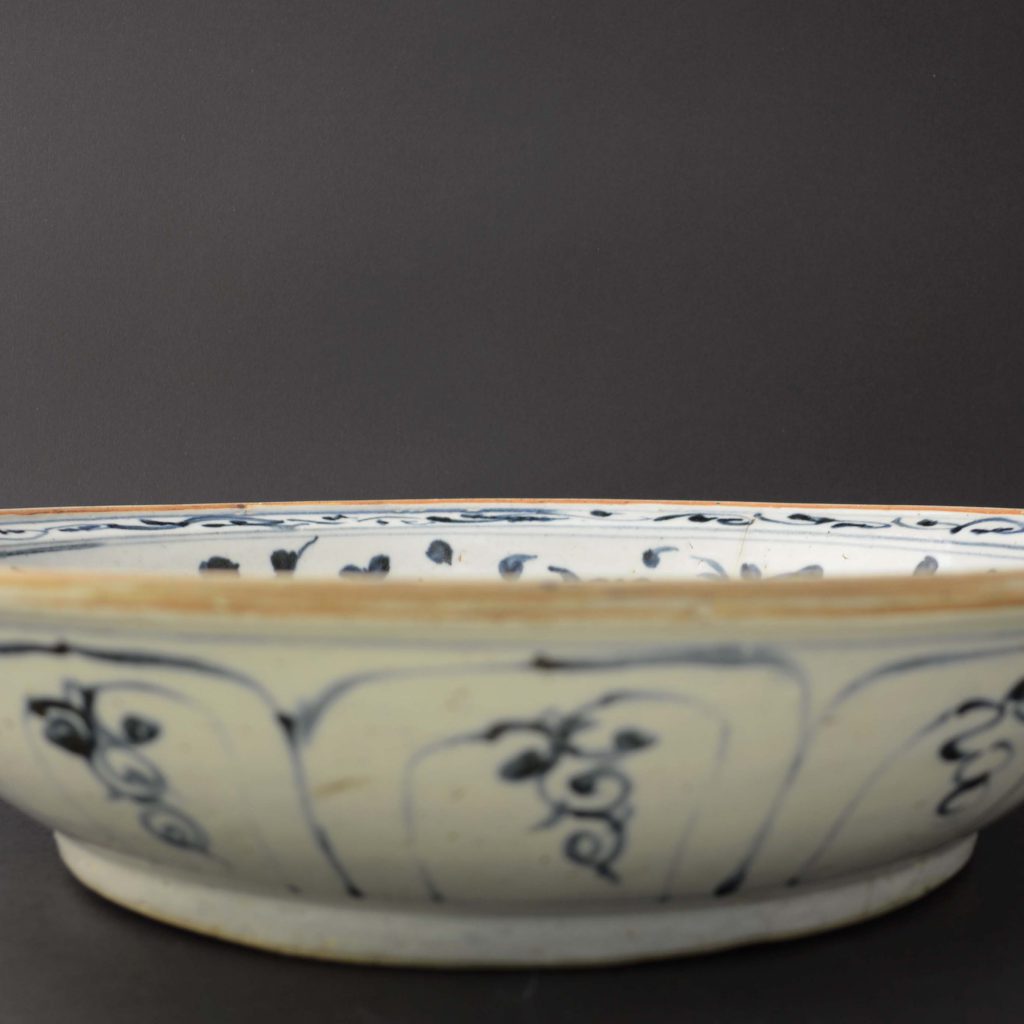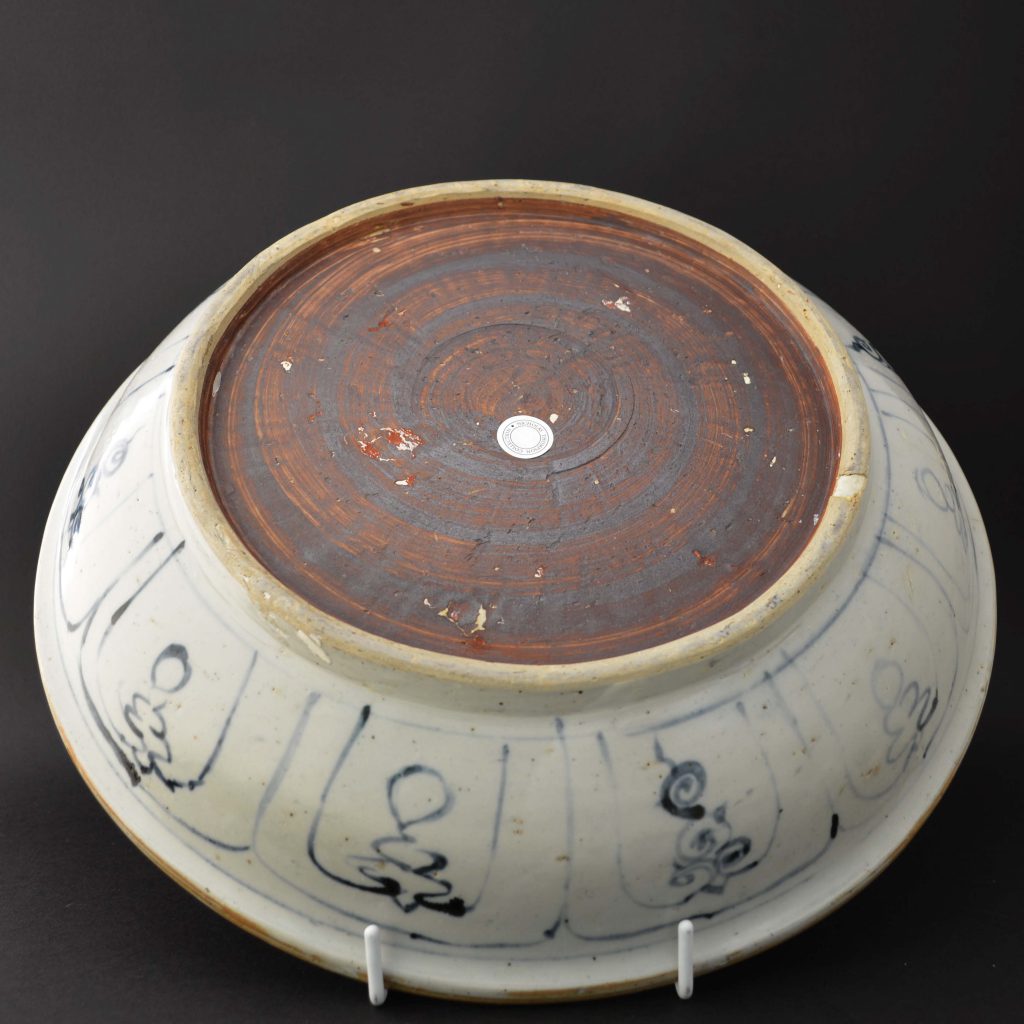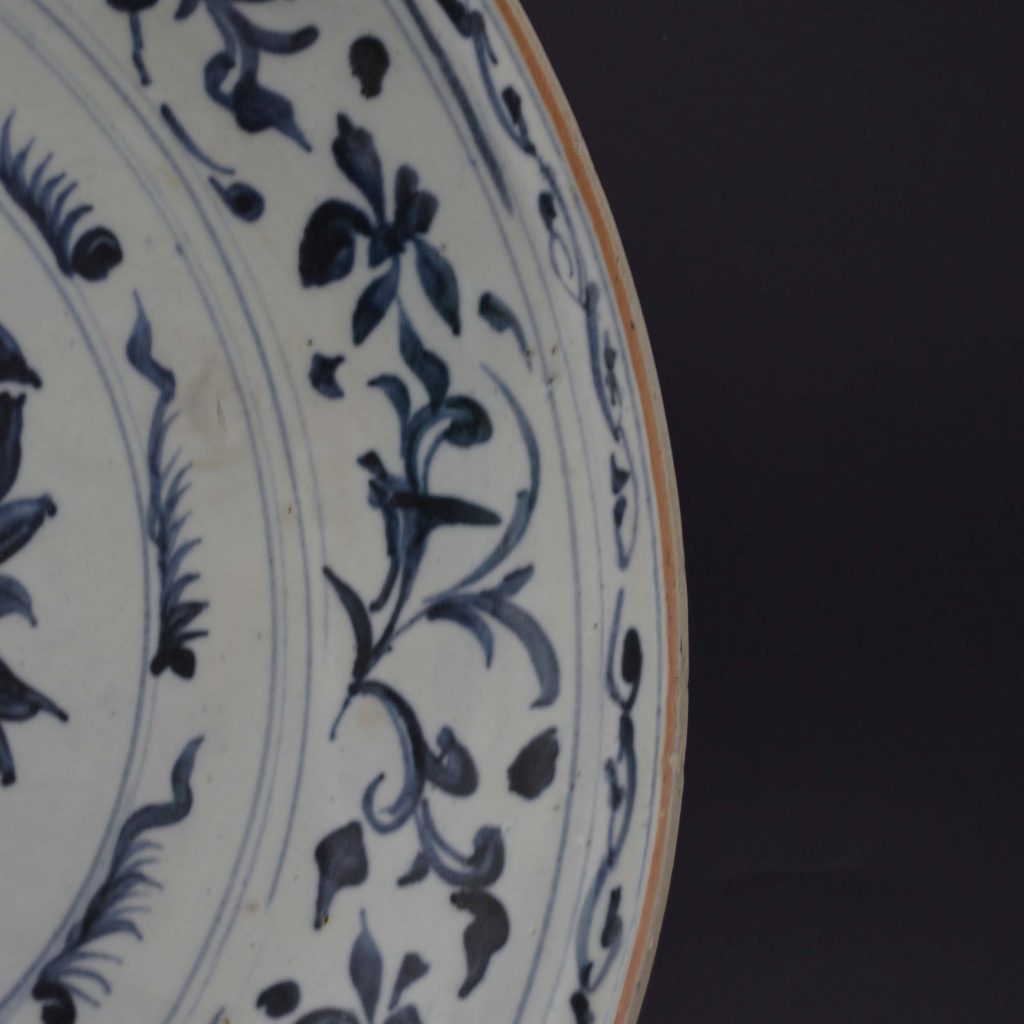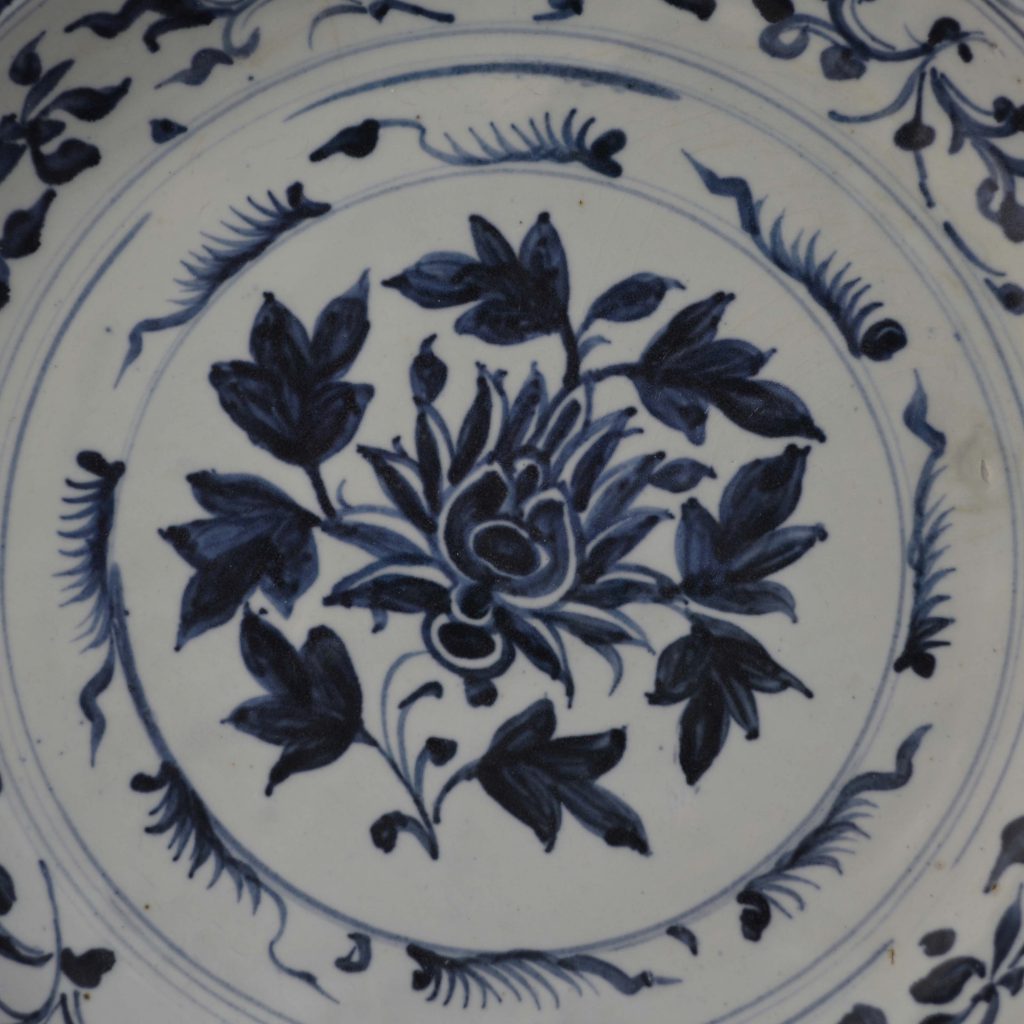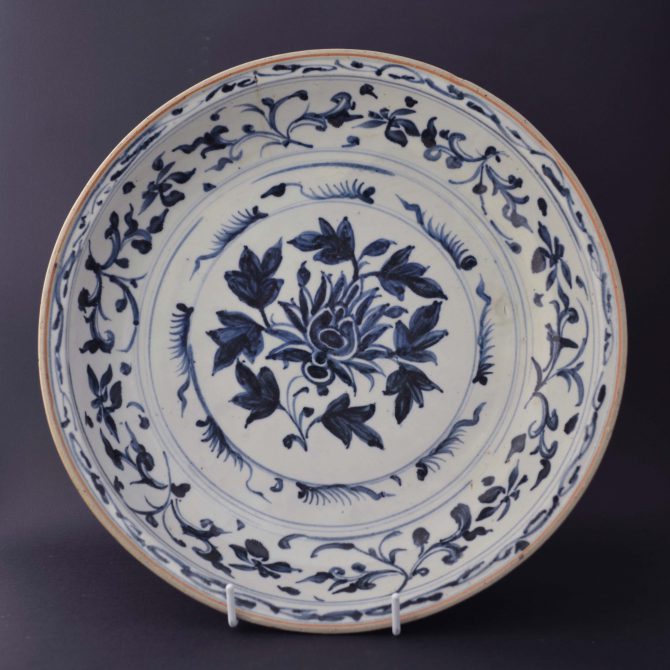
A 15th or Early 16th Century Vietnamese Blue and White Pottery Dish.
A large Vietnamese blue and white pottery dish, Chu Dou kilns c.1450 – 1520. The center painted with a flowering lotus, the cavetto with scrolling foliage. the back with stylised lotus leaf lappets, the unglazed base with an brown iron-oxide wash.
- Condition
- There is a crack to the rim which is rather dark c.80 mm. There are three cracks through the footrim which do not appear on the front. There is a firing fault to the footrim, which is a pieces of stone or other material.
- Size
- Diameter : 36.5 cm (14 1/3 inches)
- Provenance
- R and G McPherson purchased in c.2000. NICOLAS THOMPSON COLLECTION : Nicholas de la Mare Thompson (1928-2010), the grandson of the author Walter de la Mare spent his career in publishing. He started at Nesbit where he was editor of the Janet and John series of children’s books but not all of his career was so safe. He wrestled with W.H. Smith over the content of Madonna’s raunchy Sex book on behalf of Paul Hamlyn’s Octopus Group and defeated Margaret Thatcher over Spycatcher. He could not bare dogma or hypocrisy. It was hardly surprising that as a committee member of the O.C.S. he had his own ideas. He read and could recite great swaths of the articles of the Society, he used this not to attack but to stimulate debate. He approached the Society in the same way as he approached his understanding of Chinese ceramics, by stripping it down and starting again using clear empirical thinking. He was very concerned the Society was open to all and was run for the benefit of all members. Nicholas came from a family of collectors, his love of oriental ceramics was broad but his focus was on early monochromes, especially those from the Song dynasty. He bought what he loved, what he thought had merit, not what was said to be good, and certainly not anything because it was fashionable. He didn’t have a stamp collectors approach, filling in the gaps of pre-existing ordered collection, rather he would react to an object, feeling it was right for his collection. Sometimes he wasn’t sure if it was right for his collection or not. He would then “borrow” pieces and live with them, other times he would ask his wife Caroline, who’s eye he trusted, if he should keep the piece or not. He was amused because I was often able to know if he would keep a piece before he did. We discussed “pots” endlessly, he loved to talk about ceramics with a wide variety of people, and enjoyed the company of others on O.C.S. trips as well as in discussion groups or anywhere else. Later on he combined his love of Chinese ceramics with his love of books by extending his library to include rare early books, he used these to trace the development of collecting and scholarship in the 19th and early 20th century. He was fascinated by earlier scholarship, what was not understood but also what they understood and we have lost. He was always reading and wanted to know more right up to the end, he didn’t see impending death as a barrier to knowledge or indeed collecting. The week before he died he questioned, if only for a second, whether it was too late to buy another pot for the collection. He concluded it was not, he was a true collector. Nicolas died on the 25th of April 2010 at the age of 82 after living with cancer for two years. He leaves behind his energetically supportive wife Caroline and his three children. He was a kind, gentle and incredibly civilised man with a very sharp mind and dry sense of humour, he was passionate about the Society, its aims and its members. He was an incredibly supportive and thoughtful friend and is very much missed .
- Stock number
- 24886
- £ GBP
- € EUR
- $ USD
Information
Vietnamese Pottery From the Chu Dou Kilns :
Chu Dou Kilns, six kilometres from Hai Dong was the largest centre of ceramic production in medieval Vietnam. The quality of the ceramics ranged from crude everyday vessels to exquisite pieces decorated with great skill. Large quantities were produced, moulds were employed to form dishes and bowls, the rims were then wiped clean of glaze so they could be fired rim to rim without sticking in the kiln. The style of the decoration was very free and appears often to have been painted at speed using a very wet brush. Individual lines of the decoration have a visible starting and finishing point. The exact spot where the artist first touched the surface of the ceramic object with his brush can be identified and then where he removed it. I say “he” but a most important jar in the Topkapi Saray Museum in Istanbul is signed and dated by a female artist. Men, women and many children were all employed in ceramic production in Vietnam.
